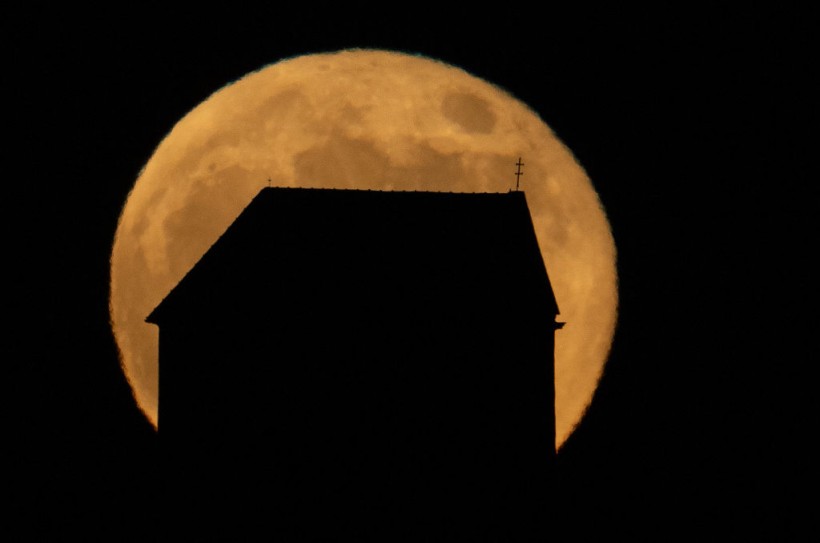In June 14 and July 13, we will be seeing two supermoons just in time for the summer solstice that will take place on June 21. Each moon will rise after dusk on some of the longest days of the year.

(Photo : by GEORG HOCHMUTH / APA / AFP) / Austria OUT)
The "Super Blood Moon" rises behind the Kogelberg Chapel in St. Margarethen, Austria on May 26, 2021. - Austria OUT
The full moon in July will be the closest of the year at 221,993 miles from the Earth. On the other hand, the full moon this month will be 229,098 miles away.
Also Read: NASA's Hubble Space Telescope Spots an Unfolding Disaster Deep in Space
The Strawberry Moon
The Strawberry moon doesn't resemble the fruit, but the name was derived from the tradition of the Algonquin tribes in the US and Canada who named the Full Moon after an abundant plant.
There are also other Europeans who call it the Mead Moon or the Honey Moon because honey is also ready to harvest in the same month.
What Does a Supermoon Mean?
The term 'supermoon' only means that the moon will be a little closer to the Earth; therefore, it will appear larger and brighter than it used to. This happens every year, but the moon's distance from Earth varies.
These supermoons will outshine everything in the night sky on these days. With a magnitude of -12.92 on average, it will be six times as bright as the Half Moon and brighter than the International Space Station (ISS).
Furthermore, scientists don't really call it 'supermoon,' but refer to it instead as 'perigee syzgy,' which means the alignment of the moon, sun, and Earth at the moon's closest point in orbit.
Other Celestial Events to Watch Out for this Month
Before the Full Moon, there are other celestial events that you might want to see. From June 9 to the early morning of June 10, you can see the bright star Spice 7 degrees to the lower left of the waxing Moon.
Come June 12 and into the morning of June 13, the bright star Antares will be around 8 degrees to the lower left of the nearly full waxing gibbous moon. By 4:30 a.m., Antares will be on the left of the moon.
On June 16, get to see Mercury in a new light as it nears its point of greatest western elongation, which is the largest point of separation from the sun. Come June 21, the summer solstice, which isn't a cosmic event (but is worth noting) will come around. This will be the longest day of the year.
On June 24, Mercury, Venus, Mars, Jupiter, and Saturn will appear in a line above the east-southeastern horizon.
By June 27, expect the Bootids Meteor Shower when it will be the most active. You can monitor it by finding the Bootes constellation located left of the Little Dipper. Do this before dawn or dusk.
Related Article: 4 Planets In Our Solar System Will Be In Rare Alignment and Visible To The Naked Eye In June 2022
This article is owned by TechTimes
Written by April Fowell





